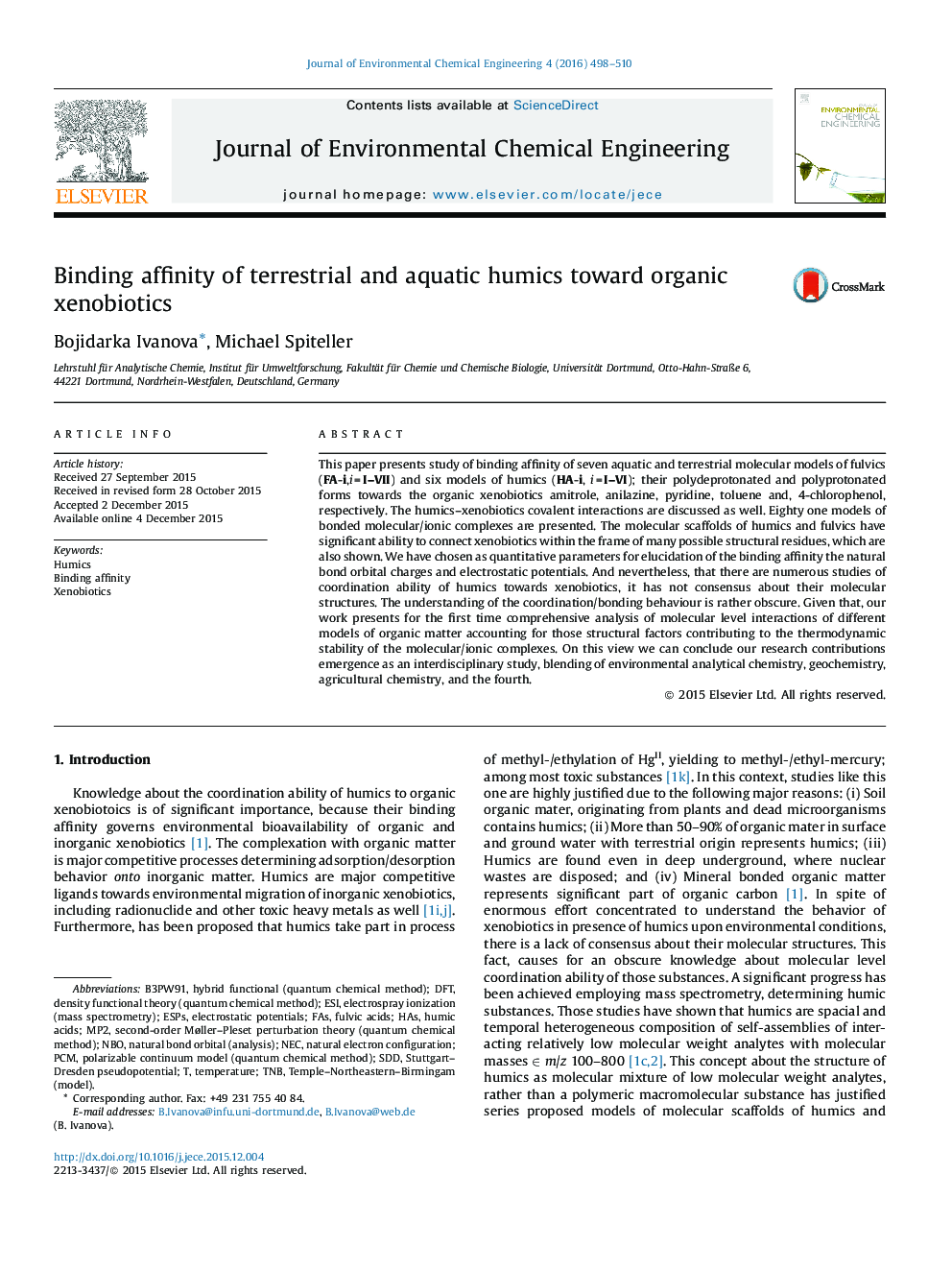| کد مقاله | کد نشریه | سال انتشار | مقاله انگلیسی | نسخه تمام متن |
|---|---|---|---|---|
| 221904 | 464267 | 2016 | 13 صفحه PDF | دانلود رایگان |
• Molecular modeling of binding affinity of seven models of fulvic acids and six models of humic acids.
• Mono-, di-, tri-and polydeprotonation and polyprotonation ability.
• Humics/organic xenobiotic covalent and π-stacking interaction.
• Environmental modeling of biogeochemical processes.
This paper presents study of binding affinity of seven aquatic and terrestrial molecular models of fulvics (FA-i, i = I–VII) and six models of humics (HA-i, i = I–VI); their polydeprotonated and polyprotonated forms towards the organic xenobiotics amitrole, anilazine, pyridine, toluene and, 4-chlorophenol, respectively. The humics–xenobiotics covalent interactions are discussed as well. Eighty one models of bonded molecular/ionic complexes are presented. The molecular scaffolds of humics and fulvics have significant ability to connect xenobiotics within the frame of many possible structural residues, which are also shown. We have chosen as quantitative parameters for elucidation of the binding affinity the natural bond orbital charges and electrostatic potentials. And nevertheless, that there are numerous studies of coordination ability of humics towards xenobiotics, it has not consensus about their molecular structures. The understanding of the coordination/bonding behaviour is rather obscure. Given that, our work presents for the first time comprehensive analysis of molecular level interactions of different models of organic matter accounting for those structural factors contributing to the thermodynamic stability of the molecular/ionic complexes. On this view we can conclude our research contributions emergence as an interdisciplinary study, blending of environmental analytical chemistry, geochemistry, agricultural chemistry, and the fourth.
Figure optionsDownload as PowerPoint slide
Journal: Journal of Environmental Chemical Engineering - Volume 4, Issue 1, March 2016, Pages 498–510
